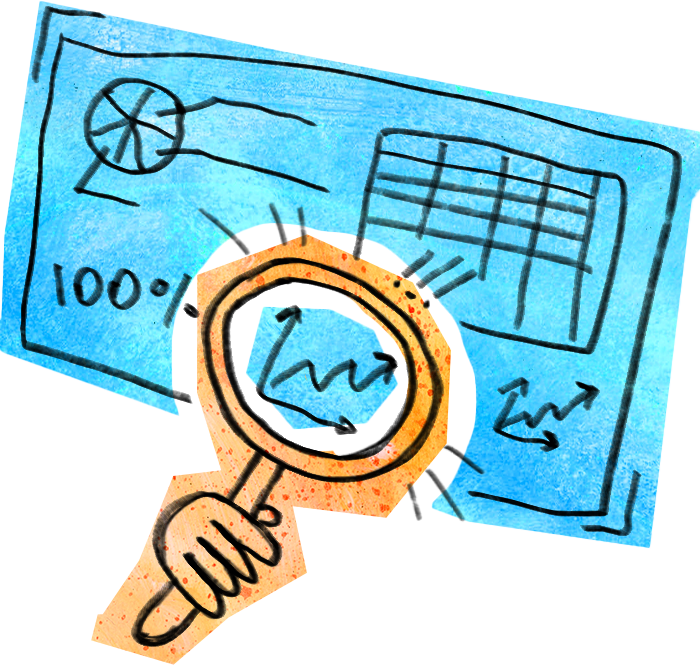Pricing your work
The text describes the basic principles of pricing art.
By: Pirjo Suhonen
The text describes the basic principles of pricing art.
By: Pirjo Suhonen

“How much does this cost?” This is a common question that requires professional knowledge and an understanding of pricing to be answered. Effective pricing is crucial for earning a living by selling your own work and expertise.
Pricing is part of marketing competence. Marketing is not only advertising – it encompasses productisation, pricing, distribution channels and marketing communication strategies. Selling, buying and pricing go hand in hand. No one buys without knowing the price, and nothing can be sold without a price. Pricing requires time and thoughtful consideration. If you are responsible for pricing your work, you must be able to explain the price to yourself and justify it to the buyer.

Before pricing, you need to know what you are pricing. What is the product, service, skill, expertise or insight being offered? What does the client receive in exchange for the set price? Pricing must clearly state what is included. The basis for pricing may be productised expertise.
Even if the creator of a product thinks it is unique, it is not a need in itself from the buyer’s perspective. One way to approach pricing is through the Elements of Value pyramid, which views the product in terms of the value it provides to the customer. If the product saves time, increases safety, adds comfort or boosts professional credibility, it has more perceived value. You are not only selling a product but a solution that meets the customer’s needs, and that changes how the price is perceived. Understanding customers’ needs and being able to respond to them makes your product more meaningful and valuable.

The value of a product – how important and meaningful it is to the customer – should be reflected in its price. Value increases price. If you cannot communicate the value from the customer’s perspective, it is difficult to justify a higher price. Simply stating that your product or expertise is “high quality” is not enough. What does quality mean to the customer? What does high quality mean in concrete terms, and how can you explain so that your customer understands? One significant factor that increases the perceived value and quality of your product is its uniqueness, its limited quantity. Quality can also be expressed by highlighting positive customer feedback (with their permission), certificates, proven successes, awards, quantities of editions, etc.
Your own financial needs naturally affect your pricing. What expenses must your art income cover? Are you working full-time, part-time or alongside other jobs?
To determine the pricing of your artistic work, start by calculating your monthly living expenses, work-related costs (e.g. materials, travel), mandatory contributions and savings goals. After that, estimate your monthly working capacity: how many works can you create or gigs can you perform? This gives you a rough idea of what you must charge per item, service or performance to cover costs.
Another method is to divide your total monthly costs by the number of products or services you sell. How many must you sell at a given price to cover the basic costs?
As the creator of your product and the seller of your expertise, you should also consider what other needs your work must fulfil. You need financial compensation for what you do, but what else? Recognition? Visibility?

Artistic work is often qualitatively demanding, meaning it is cognitively and emotionally demanding, intense and requires ethical competence. It may involve uncertainty and blurred lines between work and personal life. There is no simple cost factor to reflect qualitative demands in pricing, but it is important to acknowledge them and think about how to account for them in pricing. Such demands may affect the amount of work you can take on, meaning your time-based rates should be higher. You can explain the qualitatively demanding nature of your work to clients by illustrating, for example, the hours spent in preparation or practice, or the extent of training behind your expertise.
For example, a 10-minute dance solo might cost a client EUR 500 or more. The client may wonder at the high hourly rate of the dancer. However, the performer does not do multiple shows per hour, day or even per week, and the preparation may have taken weeks. All this must be included in the price. 
In artistic work, the exchange or relationship between the creator and the recipient is not only financial. Money changes hands, but art also involves emotional exchange. Clients may become co-creators of a work of art, and artists who sell their expertise often engage in emotional labour. For example, a performer on stage receives emotional reactions and must complete the performance regardless. In addition to financial exchange, a social relationship is formed between the creator and the audience, adding another layer to the workload.
The contract type under which you work in the arts affects how your work is priced. An employee earns a salary, a light entrepreneur invoices for their work, and an entrepreneur invoices according to their chosen company type.
As a rule, invoiced work must be priced higher than the equivalent salary in an employment relationship because the self-employed person covers many costs that employees do not. These include pension insurance (YEL) contributions, value added tax, insurance (health, accident, corporate and liability), invoicing commissions (e.g. light entrepreneur service fees), possible debt collection fees, equipment, software and licences, bookkeeping and workspace costs.
If you are VAT-liable, remember that different products and services have different VAT rates. For example, selling a book and offering writing services are taxed differently. For an entrepreneur, VAT is a pass-through cost, but it must still be accounted for in your pricing.
Under the Self-Employed Persons’ Pensions Act (YEL), you are considered an entrepreneur if you are not working under an employment relationship or a public-service relationship. The other conditions for YEL are that you are 18–67 years old, your business activity has lasted at least four months, and your annual (2025) estimated earned income is at least EUR 9,208.43. Check the current annual income threshold on työeläke.fi. If you are in a leading position in a limited liability company and own more than 30% (alone) or more than 50% (with family) of the company or voting rights, you must take out insurance under YEL.
A common misconception is that part-time entrepreneurs are exempt from YEL contributions. If the above criteria are met, you must arrange pension insurance for yourself and pay YEL contributions. These are based on your income under YEL, which you can estimate using the calculator at: tyoelake.fi. Learn more about artists’ entrepreneurship.
Pricing also includes other important considerations such as discounts and payment terms. When offering a discount, there should always be a clear reason behind it. Are you trying to boost sales, attract new clients, reward loyal customers or engage early adopters? From the seller’s perspective, rather than lowering the price, it may be more beneficial to offer extended payment terms or an additional service, which could be training or marketing support in the form of drafting a press release, access to your media contacts or the right to use artwork images for marketing communication as agreed.

Payment terms are part of pricing. The longer the payment period, the more “expensive” it is for the seller, who must wait longer for compensation. Payment terms can be used to influence cash flow and support the financial health of your business.
= Final price for the consumer
Tariffs on the Finnish Musicians’ Union website: https://www.muusikkojenliitto.fi/sopimukset-ja-tariffit/
Collective labour agreements in the theatre sector:
https://www.teme.fi/fi/tyoelama-ja-toimeentulo/tyoehtosopimukset/ (in Finnish)
The Artists’ Association of Finland’s guidelines for pricing:
https://www.artists.fi/en/artists/making-living-visual-artist#guidelines-for-pricing-visual-artists-work
Trade Union for Art and Culture Professionals TAKU’s recommendations and guides:
https://taku.fi/en/services/recommendations-and-guides/
